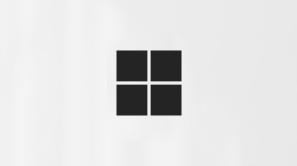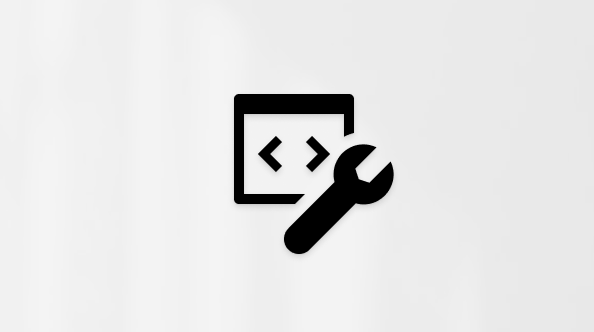本文适用于希望通过 Windows 使用语音控制电脑和创作文本的用户。 本文是对 Windows 的辅助功能支持内容集的一部分,你可以在其中找到有关 Windows 辅助功能的详细信息。 有关常规帮助,请访问 Microsoft 支持主页。
语音访问是 Windows 11 的一项功能,支持每个人仅使用自己的语音就能控制电脑和创作文本,而无需 Internet 连接。 例如,可以打开和切换应用、浏览 Web 以及使用语音阅读和创建电子邮件。 有关详细信息,请转到使用语音访问控制电脑和使用语音创作文本。
语音访问在 Windows 11 版本 22H2 及更高版本中可用。 有关Windows 11 22H2 新功能以及如何获取更新的详细信息,请参阅最近 Windows 更新中的新增功能。 不确定所拥有的 Windows 版本? 请参阅:查找 Windows 版本。
可用语言
语音访问目前提供英语、西班牙语、法语和德语。 有关支持的语言以及如何下载语言文件的更多详细信息,请转到设置语音访问。
可用命令
管理语音访问和麦克风
|
执行此操作 |
说出这样的内容 |
|---|---|
|
获取语音访问权限以收听你的声音。 |
"Voice access wake up" "Unmute" |
|
将语音访问置于睡眠状态。 |
"Voice access sleep" "Mute" |
|
关闭语音访问麦克风。 |
"Turn off microphone" |
|
关闭语音访问。 |
"Turn off voice access" "Stop voice access" "Close voice access" "Exit voice access" "Quit voice access" |
|
了解要使用的命令。 |
"What can I say" "Show all commands" "Show command list" "Show commands" |
|
访问语音访问设置菜单。 |
"Open voice access settings" |
|
访问语音访问帮助菜单。 |
"Open voice access help" |
|
访问语音访问教程。 |
"Open voice access guide" |
|
切换到“仅命令”模式。 |
"Commands mode" "Switch to command mode" |
|
切换到“仅听写”模式。 |
"Dictation mode" "Switch to dictation mode" |
|
切换到默认模式(命令和听写)。 |
"Default mode" "Switch to default mode" |
与应用交互
|
执行此操作 |
说出这样的内容 |
|---|---|
|
打开新应用。 |
"Open <app name>" "Start <app name>" "Show <app name>" |
|
关闭打开的应用。 |
"Close <app name>" "Close window" "Exit <app name>" "Quit <app name>" |
|
切换到现有应用。 |
"Switch to <app name>" "Go to <app name>" |
|
最小化窗口。 |
"Minimize window" "Minimize <app name>" |
|
最大化窗口。 |
"Maximize window" "Maximize <app name>" |
|
还原窗口。 |
"Restore window" "Restore <app name>" |
|
打开任务切换器。 |
"Show task switcher" "List all windows" "Show all windows" |
|
转到桌面。 |
"Go to desktop" "Go home" "Minimize all windows" |
|
在浏览器中搜索,其中“搜索引擎”可以是必应、Google 或 YouTube,而“x”是要查找的内容。 |
"Search on <search engine> for <x>" |
|
将窗口贴靠到特定方向,其中“方向”是左、右、左上、右上、左下或右下。 |
"Snap window to <direction>" "Snap the window to <direction>" |
|
在 Windows 电脑上搜索实体(实体可以是文件或应用程序)。 |
"Search <Entity>" "Search Windows for <Entity>" "Search for <Entity>" |
与控件交互
|
执行此操作 |
说出这样的内容 |
|---|---|
|
选择一项。 |
"Click <item name>" "Tap <item name>" |
|
双击一项。 |
"Double-click <item name>" "Mouse double-click" |
|
将焦点放在一项上。 |
"Move to <item name>" "Focus on <item name>" |
|
展开列表。 |
"Expand <item name>" |
|
在状态之间切换。 |
"Toggle <item name>" "Flip <item name>" |
|
在特定方向上滚动。 |
"Scroll <direction>" |
|
开始在特定方向上滚动。 |
"Start scrolling <direction>" |
|
停止滚动。 |
"Stop scrolling" "Stop" |
|
将滑块在特定方向上移动一定距离,其中“方向”是上、下、左或右,“值”是距离。 |
"Move slider <direction> <value> times" |
与覆盖交互
|
执行此操作 |
说出这样的内容 |
|---|---|
|
在屏幕上显示数字覆盖。 |
"Show numbers" "Show numbers everywhere" |
|
在正在使用的应用上显示数字覆盖。 |
"Show numbers here" |
|
在特定应用或窗口上显示数字覆盖。 |
"Show numbers on <app name>" |
|
在任务栏上显示数字。 |
"Show numbers on taskbar" |
|
删除数字覆盖。 |
"Hide numbers" "Cancel" |
|
选择编号项。 |
"Click <number>" "<number>" |
|
在屏幕上显示网格覆盖。 |
"Show grid" "Show grid everywhere" "Show window grid" |
|
在正在使用的窗口上显示网格覆盖。 |
"Show grid here" |
|
删除网格覆盖。 |
"Hide grid" "Cancel" |
|
深入研究网格。 |
"<number>" |
|
同时深入研究网格多个步骤。 |
"Mouse grid <number> <number> <number> <number> <number>" |
|
还原到网格的先前状态。 |
"Undo" "Undo that" |
|
标记要拖动的对象。 |
"Mark" "Mark <number>" |
|
将标记的对象放置到某个位置。 |
"Drag" |
控制鼠标和键盘
|
执行此操作 |
说出这样的内容 |
|---|---|
|
执行左键单击。 |
"Click" "Tap" "Left click" |
|
执行右键单击。 |
"Right click" |
|
执行双击。 |
"Double-click" |
|
执行三击。 |
"Triple-click" |
|
按某个键。 |
"Press <key>" |
|
多次按某个键。 |
"Press <key> <count> times" |
|
按某个组合键。 |
"Press <key1> <key2>..." "Press <key1> and/plus <key2>..." |
|
长按某个键。 |
"Press and hold <key>" |
|
释放按住的键。 |
"Release <key>" "Release" |
|
按键盘 Esc 键关闭菜单浮出控件,如上下文菜单或下拉菜单。 |
"Dismiss" |
|
按键盘 Backspace 键可修复听写过程中出现的错误。 |
"Backspace" |
|
在听写文本时,按键盘 Enter 键可移动到新行。 |
"Enter" |
|
按键盘 Tab 键可快速浏览 UI 上的字段。 |
"Tab" |
|
按键盘 Delete 键可修复听写过程中出现的错误。 |
"Delete" |
|
在指定方向上连续移动鼠标指针,其中“方向”可以是上、下、左、右、左上、右上、左下或右下。 |
"Move mouse <direction>" |
|
在特定方向上移动鼠标指针一段固定距离,其中“方向”可以是上、下、左、右、左上、右上、左下或右下。 |
"Move mouse <direction> <distance>" |
|
在给定方向上拖动鼠标指针,其中“方向”可以是上、下、左、右、左上、右上、左下或右下。 |
"Drag mouse <direction>" |
|
增加或降低鼠标指针移动的速度。 |
"Move faster" "Faster" "Move slower" "Slower" |
|
停止移动鼠标指针。 |
"Stop" "Stop moving" |
听写文本
|
执行此操作 |
说出这样的内容 |
|---|---|
|
在文本框中插入文本。 |
"<text>" |
|
在文本框中以文本的形式插入语音访问命令。 |
"Type <voice access command>" "Dictate <voice access command>" |
|
在光标处插入文本,并大写每个单词的首字母。 |
"Caps <text>" |
|
在光标处插入文本,文本前面没有任何空格。 |
"No space <text>" |
|
打开触摸键盘。 |
"Show touch keyboard" "Show keyboard" |
|
关闭触摸键盘。 |
"Hide touch keyboard" "Hide keyboard" |
|
逐字母拼出文本。 |
"Spell out" |
|
逐字母拼出所选文本或最后听写的文本。 |
"Spell that" |
|
更正所选文本或最后听写的文本。 |
"Correct that" |
|
更正特定文本。 |
"Correct <text>" |
选择文本
|
执行的操作 |
说出这样的内容 |
|---|---|
|
选择最后听写的文本。 |
"Select that" |
|
选择文本框中的所有文本。 |
"Select all" |
|
选择文本框中的特定文本。 |
"Select <text>" |
|
选择文本框中的文本范围。 |
"Select from <text 1> to <text 2>" "Select <text 1> through <text 2>" |
|
选择前一个或后一个单词。 |
"Select previous word" "Select last word" "Select next word" |
|
选择所需数量的前几个或后几个单词。 |
"Select previous <count> words" "Select last <count> words" "Select next <count> words" |
|
选择前一个字符或后一个字符。 |
"Select previous character" "Select last character" "Select next character" |
|
选择所需数量的前几个或后几个字符。 |
"Select previous <count> characters" "Select backward <count> characters" "Select last <count> characters" "Select forward <count> characters" "Select next <count> characters" |
|
选择前一行。 |
"Select previous line" "Select last line" |
|
选择所需数量的前几行或后几行。 |
"Select previous <count> lines" "Select backward <count> lines" "Select last <count> lines" "Select forward <count> lines" "Select next <count> lines" |
|
选择前一段或后一段。 |
"Select previous paragraph" "Select last paragraph" "Select next paragraph" |
|
选择所需数量的前几段或后几段。 |
"Select previous <count> paragraphs" "Select last <count> paragraphs" "Select next <count> paragraphs" |
|
选择文本光标处的当前单词。 |
"Select word" "Select this word" |
|
选择文本光标处的当前行。 |
"Select line" "Select this line" |
|
选择文本光标处的当前段落。 |
"Select paragraph" "Select this paragraph" |
|
清除所选文本。 |
"Unselect that" "Clear selection" |
编辑文本
|
执行的操作 |
说出这样的内容 |
|---|---|
|
删除所选文本或最后听写的文本。 |
"Delete that" "Scratch that" "Strike that" |
|
删除文本框中的特定文本。 |
"Delete <text>" |
|
删除文本框中的所有文本。 |
"Delete all" |
|
删除前一个字符或后一个字符。 |
"Delete previous character" "Delete last character" "Delete next character" |
|
删除所需数量的前几个或后几个字符。 |
"Delete previous <count> characters" "Delete last <count> characters" "Delete next <count> characters" |
|
删除前一个或后一个单词。 |
"Delete previous word" "Delete last word" "Delete next word" |
|
删除所需数量的前几个或后几个单词。 |
"Delete previous <count> words" "Delete last <count> words" "Delete next <count> words" |
|
删除前一行。 |
"Delete previous line" "Delete last line" |
|
删除所需数量的前几行或后几行。 |
"Delete previous <count> lines" "Delete last <count> lines" "Delete next <count> lines" |
|
删除前一段或后一段。 |
"Delete previous paragraph" "Delete last paragraph" "Delete next paragraph" |
|
删除所需数量的前几段或后几段。 |
"Delete previous <count> paragraphs" "Delete last <count> paragraphs" "Delete next <count> paragraphs" |
|
删除文本光标处的当前单词。 |
"Delete word" "Delete this word" |
|
删除文本光标处的当前行。 |
"Delete line" "Delete this line" |
|
删除文本光标处的当前段落。 |
"Delete paragraph" "Delete this paragraph" |
|
剪切所选文本或最后听写的文本。 |
"Cut that" |
|
剪切所需数量的前几个或后几个字符。 |
"Cut previous <count> characters" "Cut last <count> characters" "Cut next <count> characters" |
|
剪切前一个或后一个单词。 |
"Cut previous word" "Cut last word" "Cut next word" |
|
剪切所需数量的前几个或后几个单词。 |
"Cut previous <count> words" "Cut last <count> words" "Cut next <count> words" |
|
剪切前一行。 |
"Cut previous line" "Cut last line" |
|
剪切所需数量的前几行或后几行。 |
"Cut previous <count> lines" "Cut last <count> lines" "Cut next <count> lines" |
|
剪切前一段或后一段。 |
"Cut previous paragraph" "Cut last paragraph" "Cut next paragraph" |
|
剪切所需数量的前几段或后几段。 |
"Cut previous <count> paragraphs" "Cut last <count> paragraphs" "Cut next <count> paragraphs" |
|
复制所选文本或最后听写的文本。 |
"Copy that" |
|
复制所需数量的前几个或后几个字符。 |
"Copy previous <count> characters" "Copy last <count> characters" "Copy next <count> characters" |
|
复制前一个或后一个单词。 |
"Copy previous word" "Copy last word" "Copy next word" |
|
复制所需数量的前几个或后几个单词。 |
"Copy previous <count> words" "Copy last <count> words" "Copy next <count> words" |
|
复制前一行。 |
"Copy previous line" "Copy last line" |
|
复制所需数量的前几行或后几行。 |
"Copy previous <count> lines" "Copy last <count> lines" "Copy next <count> lines" |
|
复制前一段或后一段。 |
"Copy previous paragraph" "Copy last paragraph" "Copy next paragraph" |
|
复制所需数量的前几段或后几段。 |
"Copy previous <count> paragraphs" "Copy last <count> paragraphs" "Copy next <count> paragraphs" |
|
在文本框中粘贴文本。 |
"Paste" "Paste here" "Paste that" |
|
撤消/还原上一操作的效果。 |
"Undo that" |
|
重做/还原以前还原的操作的效果。 |
"Redo that" |
|
从所选文本或最后听写的文本中删除所有空格。 例如,如果在最近言语中听写了“Peyton Davis @outlook.com”,然后想要删除所有空格以输出为 PeytonDavis@outlook.com。 |
"No space that" |
|
在光标处插入文本,文本前面没有任何空格。 例如,如果已将文本“Peyton”添加到文本框,然后想要插入“Davis”,但不想在“Davis”之前添加空格。 输出将为“PeytonDavis”。 |
"No space <text>" |
设置文本格式
|
执行的操作 |
说出这样的内容 |
|---|---|
|
对特定文本应用粗体格式。 |
"Bold <text>" "Boldface <text>" |
|
对特定文本应用斜体格式。 |
"Italicize <text>" |
|
为特定文本加下划线。 |
"Underline <text>" |
|
对所选文本或最后听写的文本应用粗体、斜体或下划线格式。 |
"Bold that" "Italicize that" "Underline that" |
|
大写特定单词的首字母。 |
"Capitalize <word>" |
|
大写特定单词的所有字母。 |
"Uppercase <word>" "All caps <word>" |
|
在光标处插入文本,并大写每个单词的首字母。 |
"Caps <text>" |
|
小写特定单词中的所有字母。 |
"Lowercase <word>" "No caps <word>" |
|
大写或小写所选文本或最后听写的文本。 |
"Capitalize that" "Cap that" "Uppercase that" "All caps that" "Lowercase that" "No caps that" |
|
对指定数量的前几个或后几个单词执行以下操作之一:粗体、斜体、下划线、大写或小写。 |
"<action> previous <count> words" "<action> last <count> words" "<action> next <count> words" |
|
对指定数量的前几行或后几行执行以下操作之一:粗体、斜体、下划线、大写或小写。 |
"<action> previous <count> lines" "<action> last <count> lines" "<action> next <count> lines" |
|
对指定数量的前几段或后几段执行以下操作之一:粗体、斜体、下划线、大写或小写。 |
"<action> previous <count> paragraphs" "<action> last <count> paragraphs" "<action> next <count> paragraphs" |
|
对指定数量的前几个或后几个字符执行以下操作之一:粗体、斜体、下划线、大写或小写。 |
"<action> previous <count> characters" "<action> last <count> characters" "<action> next <count> characters" |
导航文本
|
执行此操作 |
说出这样的内容 |
|---|---|
|
插入新行并将光标置于新行开头。 |
"New line" |
|
插入新段落并将光标置于新段落开头。 |
"New paragraph" |
|
将光标置于特定文本之前或之后。 |
"Move before <text>" "Move after <text>" "Insert before <text>" "Insert after <text>" |
|
将光标置于文本框或文档的开头/末尾。 |
"Go to top" "Go to bottom" "Go to end" "Go to beginning of document" "Go to start of document" "Go to end of document" "Move to top" "Move to bottom" "Move to end" "Move to beginning of document" "Move to start of document" "Move to end of document" "Move to bottom" |
|
将光标置于单词的开头或末尾。 |
"Go to beginning of word" "Go to start of word" "Move to beginning of word" "Move to start of word" "Go to end of word" "Move to end of word" |
|
将光标置于行的开头或末尾。 |
"Go to beginning of line" "Go to start of line" "Move to beginning of line" "Move to start of line" "Go to end of line" "Move to end of line" |
|
将光标置于段落的开头或末尾。 |
"Go to beginning of paragraph" "Go to start of paragraph" "Move to beginning of paragraph" "Move to start of paragraph" "Go to end of paragraph" "Move to end of paragraph" |
|
将光标向左、向右、向上或向下移动所需步数。 |
"Move <direction> <count> times "Go <direction> <count> times" |
|
将光标向左或向右移动所需字符数。 |
"Move left <count> characters" "Move right <count> characters" "Move forward <count> characters" "Go left <count> characters" "Go right <count> characters" |
|
将光标向左或向右移动所需单词数。 |
"Move left <count> words" "Move right <count> words" "Go left <count> words" "Go right <count> words" |
|
将光标向上或向下移动所需行数。 |
"Move up <count> lines" "Move down <count> lines" "Go up <count> lines" "Go down <count> lines" "Go back <count> lines" |
|
将光标向上或向下移动所需段落数。 |
"Move up <count> paragraphs" "Move down <count> paragraphs" "Go up <count> paragraphs" "Go down <count> paragraphs" |
|
将光标置于所选文本的开头或末尾,并清除所选内容。 |
"Move to beginning of selection" "Move to end of selection" "Go to beginning of selection" "Go to end of selection" |
听写标点符号
|
插入的内容 |
说出这样的内容 |
|---|---|
|
. |
"Period" "Full stop" |
|
, |
"Comma" |
|
? |
"Question mark" |
|
! |
"Exclamation mark" "Exclamation point" |
|
的 |
"Apostrophe-s" |
|
: |
"Colon" |
|
; |
"Semicolon" |
|
" " |
"Open quotes" "Close quotes" |
|
- |
"Hyphen" |
|
... |
"Ellipsis" "Dot dot dot" |
|
' ' |
"Begin single quote" "Open single quote" "End single quote" "Close single quote" |
|
( ) |
"Left parentheses" "Open parentheses" "Right parentheses" "Close parentheses" |
|
[ ] |
"Open bracket" "Close bracket" |
|
{ } |
"Left brace" "Open brace" "Right brace" "Close brace" |
听写符号
|
插入的内容 |
说出这样的内容 |
|---|---|
|
* |
"Asterisk" |
|
\ |
"Backslash" |
|
/ |
"Forward slash" |
|
| |
"Vertical bar" "Pipe character" |
|
_ |
"Underscore" |
|
¶ |
"Paragraph sign" "Paragraph mark" |
|
§ |
"Section sign" |
|
& |
"Ampersand" "And sign" |
|
@ |
"At sign" |
|
© |
"Copyright sign" |
|
® |
"Registered sign" |
|
° |
"Degree symbol" |
|
% |
"Percent sign" |
|
# |
"Number sign" "Pound sign" |
|
+ |
"Plus sign" |
|
- |
"Minus sign" |
|
× |
"Multiplication sign" |
|
÷ |
"Division sign" |
|
= |
"Equals sign" |
|
< > |
"Less than sign" "Greater than sign" |
|
$ |
"Dollar sign" |
|
£ |
"Pound sterling sign" |
|
€ |
"Euro sign" |
|
¥ |
"Yen sign" |
另请参阅
为残障客户提供技术支持
Microsoft 希望尽可能地为所有客户提供最佳体验。 如果你是残障人士或对辅助功能存在疑问,请联系 Microsoft 辅助功能 Answer Desk 寻求技术帮助。 辅助功能 Answer Desk 支持团队接受过使用多种热门辅助技术的培训,并可使用英语、西班牙语、法语和美国手语提供帮助。 请访问 Microsoft 辅助功能 Answer Desk 网站,找出你所在地区的联系人详细信息。
如果你是政府版、商业版或企业版用户,请联系企业版辅助功能 Answer Desk。








